Do you have a question about the HERO SPLENDOR+ PROGRAMMED FI and is the answer not in the manual?
Details on the location, format, and importance of Vehicle Identification Number and Engine Number.
Identification of motorcycle parts shown in the top view diagram.
Identification of motorcycle parts shown in the left side view diagram.
Identification of motorcycle parts shown in the right side view diagram.
Overall dimensions, wheelbase, ground clearance, and kerb weight of the vehicle.
Details on engine power, torque, bore, stroke, compression ratio, displacement, and spark plug.
Gear ratios, battery type, alternator, and lighting specifications.
Advice on selecting and fitting accessories to ensure safety and proper function.
Warnings against modifying the vehicle's original design or equipment.
Recommendations for preventing vehicle theft.
Advice on defensive riding and making oneself visible to other road users.
Importance of riding within personal abilities and avoiding alcohol/drugs.
Steps to take if involved in a crash, including assessing injuries and vehicle condition.
Recommendations for wearing helmets, eye protection, and other protective gear.
Essential practices for safe riding, including inspections, braking, and visibility.
Actions to avoid while riding, such as phone use, sudden maneuvers, and riding under influence.
Maintaining engine health through regular tuning and servicing for reduced pollution.
Importance of using genuine spares, engine oil, and correct fuel for environmental health.
Explanation of the ignition switch positions (ON, OFF, LOCK) and their functions.
Description and function of various indicators on the speedometer panel.
How to read the fuel gauge and caution regarding low fuel levels.
Steps to engage and disengage the steering lock for security.
Operation of dimmer switch and turn signal lamp switch.
Operation of electric starter switch and i3s switch.
Steps for initial activation and warm-up of the i3s system.
How to drive with the i3s switch in ON or OFF position.
Function of the side stand indicator and switch for safety.
Fuel tank capacity and procedure for opening the fuel tank cap.
How to use the USB charger for mobile devices and important notes.
Inspecting engine oil level and ensuring sufficient fuel availability.
Checking brake operation, free play, and tyre condition and pressure.
Checking clutch, drive chain, throttle, lamps, horn, mirrors, and i3s switch.
Protecting catalytic converter and avoiding exhaust fumes in enclosed areas.
Electric start, kick start, handling flooded engines, and ignition cut-off.
Guidelines for the first 500 km to ensure vehicle reliability and performance.
Steps for starting off, shifting gears, and coordinating clutch and throttle.
Procedures for normal and sudden braking, including Integrated Braking System (IBS).
How to open and close the utility box to access its contents.
Contents of the tool kit and first aid kit for minor repairs and emergencies.
Steps for washing the vehicle, including rinsing and drying.
Why regular maintenance is crucial for safety, economy, and performance.
Warnings about improper maintenance and following manual instructions.
Precautions like engine off, cooling hot parts, avoiding moving parts, and fire safety.
Schedule for paid services based on days or kilometers.
Notes on specific maintenance tasks like air cleaner, engine oil, and drive chain.
Procedure for inspecting spark plugs, including cleaning, removal, and gap checking.
How to check engine oil level and top-up procedure.
Procedure for draining and refilling engine oil, including oil circulation check.
How to check drive chain slackness and free play adjustment.
Procedure for adjusting drive chain slackness using axle nuts and adjuster marks.
Checking drive chain slider for wear and replacement.
Function of integrated/rear brake pedal and free play measurement.
Adjusting the front brake cable free play.
Adjusting the rear brake pedal free play and checking for proper seating.
Identifying when brake shoes need replacement using wear indicators.
Checking front forks and rear shock absorbers for smooth action and oil leakage.
Adjusting rear shock absorbers for different load conditions.
Steps for removing the front wheel, including speedometer cable disconnection.
Steps for removing the rear wheel, including brake rod and stopper arm disconnection.
Details on tubeless tyres, their importance, and condition checks.
Recommended cold tyre pressures for rider only and rider+pillion.
Checking tyres for wear, damage, bumps, bulges, cuts, splits, or cracks.
Identifying when to replace tyres based on tread wear indicators and minimum depth.
Checking and tightening nuts and bolts at regular intervals.
Battery location, specification, charging, and storage recommendations.
Procedure for removing and installing the vehicle battery.
Identification of fuse box locations and circuit/spare fuse ratings.
Procedure for adjusting the headlamp beam vertically.
Explanation of the catalytic converter's function and precautions.
Troubleshooting steps for engine starting problems.
Troubleshooting poor pick up, i3s, and electrical system problems.
Explanation and examples of mandatory road signs and their importance.
Information on cautionary signs used as warnings for road conditions.
Explanation of informatory signs providing directions and facility information.
Details on what the warranty covers for the vehicle.
General terms and conditions for vehicle warranty claims.
Specific conditions and exclusions that are not covered under the vehicle warranty.
What emission-related components are covered under warranty.
Conditions and procedures for availing emission warranty benefits.
Advantages of using Hero MotoCorp genuine spare parts.
Consequential damages caused by using non-genuine clutch plates, cam chain kits, and gaskets.
Problems arising from non-genuine air cleaner elements and spark plugs.
Risks associated with non-genuine brake pads/shoes and chain sprocket kits.
Contact details for Hero MotoCorp offices in the Central Zone.
Contact details for Hero MotoCorp offices in the North Zone.
Contact details for Hero MotoCorp offices in the South Zone.
Contact details for Hero MotoCorp offices in the West Zone.
Details on the location, format, and importance of Vehicle Identification Number and Engine Number.
Identification of motorcycle parts shown in the top view diagram.
Identification of motorcycle parts shown in the left side view diagram.
Identification of motorcycle parts shown in the right side view diagram.
Overall dimensions, wheelbase, ground clearance, and kerb weight of the vehicle.
Details on engine power, torque, bore, stroke, compression ratio, displacement, and spark plug.
Gear ratios, battery type, alternator, and lighting specifications.
Advice on selecting and fitting accessories to ensure safety and proper function.
Warnings against modifying the vehicle's original design or equipment.
Recommendations for preventing vehicle theft.
Advice on defensive riding and making oneself visible to other road users.
Importance of riding within personal abilities and avoiding alcohol/drugs.
Steps to take if involved in a crash, including assessing injuries and vehicle condition.
Recommendations for wearing helmets, eye protection, and other protective gear.
Essential practices for safe riding, including inspections, braking, and visibility.
Actions to avoid while riding, such as phone use, sudden maneuvers, and riding under influence.
Maintaining engine health through regular tuning and servicing for reduced pollution.
Importance of using genuine spares, engine oil, and correct fuel for environmental health.
Explanation of the ignition switch positions (ON, OFF, LOCK) and their functions.
Description and function of various indicators on the speedometer panel.
How to read the fuel gauge and caution regarding low fuel levels.
Steps to engage and disengage the steering lock for security.
Operation of dimmer switch and turn signal lamp switch.
Operation of electric starter switch and i3s switch.
Steps for initial activation and warm-up of the i3s system.
How to drive with the i3s switch in ON or OFF position.
Function of the side stand indicator and switch for safety.
Fuel tank capacity and procedure for opening the fuel tank cap.
How to use the USB charger for mobile devices and important notes.
Inspecting engine oil level and ensuring sufficient fuel availability.
Checking brake operation, free play, and tyre condition and pressure.
Checking clutch, drive chain, throttle, lamps, horn, mirrors, and i3s switch.
Protecting catalytic converter and avoiding exhaust fumes in enclosed areas.
Electric start, kick start, handling flooded engines, and ignition cut-off.
Guidelines for the first 500 km to ensure vehicle reliability and performance.
Steps for starting off, shifting gears, and coordinating clutch and throttle.
Procedures for normal and sudden braking, including Integrated Braking System (IBS).
How to open and close the utility box to access its contents.
Contents of the tool kit and first aid kit for minor repairs and emergencies.
Steps for washing the vehicle, including rinsing and drying.
Why regular maintenance is crucial for safety, economy, and performance.
Warnings about improper maintenance and following manual instructions.
Precautions like engine off, cooling hot parts, avoiding moving parts, and fire safety.
Schedule for paid services based on days or kilometers.
Notes on specific maintenance tasks like air cleaner, engine oil, and drive chain.
Procedure for inspecting spark plugs, including cleaning, removal, and gap checking.
How to check engine oil level and top-up procedure.
Procedure for draining and refilling engine oil, including oil circulation check.
How to check drive chain slackness and free play adjustment.
Procedure for adjusting drive chain slackness using axle nuts and adjuster marks.
Checking drive chain slider for wear and replacement.
Function of integrated/rear brake pedal and free play measurement.
Adjusting the front brake cable free play.
Adjusting the rear brake pedal free play and checking for proper seating.
Identifying when brake shoes need replacement using wear indicators.
Checking front forks and rear shock absorbers for smooth action and oil leakage.
Adjusting rear shock absorbers for different load conditions.
Steps for removing the front wheel, including speedometer cable disconnection.
Steps for removing the rear wheel, including brake rod and stopper arm disconnection.
Details on tubeless tyres, their importance, and condition checks.
Recommended cold tyre pressures for rider only and rider+pillion.
Checking tyres for wear, damage, bumps, bulges, cuts, splits, or cracks.
Identifying when to replace tyres based on tread wear indicators and minimum depth.
Checking and tightening nuts and bolts at regular intervals.
Battery location, specification, charging, and storage recommendations.
Procedure for removing and installing the vehicle battery.
Identification of fuse box locations and circuit/spare fuse ratings.
Procedure for adjusting the headlamp beam vertically.
Explanation of the catalytic converter's function and precautions.
Troubleshooting steps for engine starting problems.
Troubleshooting poor pick up, i3s, and electrical system problems.
Explanation and examples of mandatory road signs and their importance.
Information on cautionary signs used as warnings for road conditions.
Explanation of informatory signs providing directions and facility information.
Details on what the warranty covers for the vehicle.
General terms and conditions for vehicle warranty claims.
Specific conditions and exclusions that are not covered under the vehicle warranty.
What emission-related components are covered under warranty.
Conditions and procedures for availing emission warranty benefits.
Advantages of using Hero MotoCorp genuine spare parts.
Consequential damages caused by using non-genuine clutch plates, cam chain kits, and gaskets.
Problems arising from non-genuine air cleaner elements and spark plugs.
Risks associated with non-genuine brake pads/shoes and chain sprocket kits.
Contact details for Hero MotoCorp offices in the Central Zone.
Contact details for Hero MotoCorp offices in the North Zone.
Contact details for Hero MotoCorp offices in the South Zone.
Contact details for Hero MotoCorp offices in the West Zone.
| Brand | HERO |
|---|---|
| Model | SPLENDOR+ PROGRAMMED FI |
| Category | Motorcycle |
| Language | English |
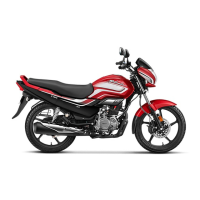
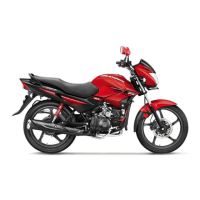
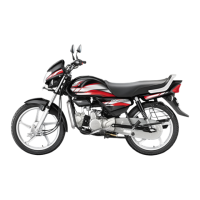
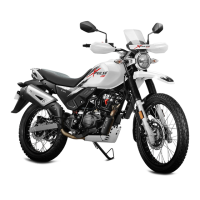

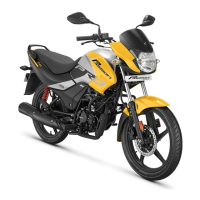
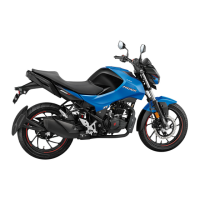
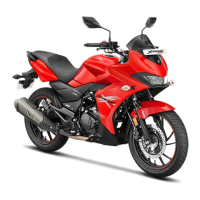
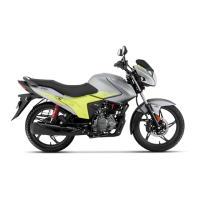
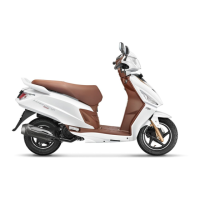
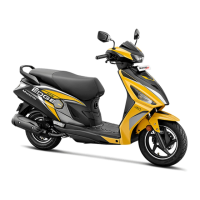
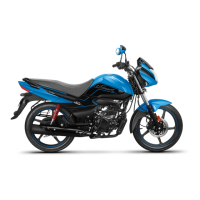
